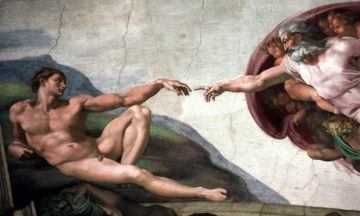Hisham Matar in The Guardian:
 Before Italy became a nation, it was made up of a collection of city-states governed by un’autorità superior, in the form of a powerful noble family or a bishop. Siena was an exception in that it favoured civic rule. This partly accounts for the unique character of its art. It produced Ambrogio Lorenzetti’s The Allegory of Good and Bad Government, a series of frescos housed in the Palazzo Pubblico, the civic heart of the city. It is one of the earliest and most significant secular paintings we have. If civic rule were a church, this would be its altarpiece. Siena also imbued its artists with a rare and humanist curiosity that, even in their depictions of religious scenes, involved them in meditations on human psychology and ideas.
Before Italy became a nation, it was made up of a collection of city-states governed by un’autorità superior, in the form of a powerful noble family or a bishop. Siena was an exception in that it favoured civic rule. This partly accounts for the unique character of its art. It produced Ambrogio Lorenzetti’s The Allegory of Good and Bad Government, a series of frescos housed in the Palazzo Pubblico, the civic heart of the city. It is one of the earliest and most significant secular paintings we have. If civic rule were a church, this would be its altarpiece. Siena also imbued its artists with a rare and humanist curiosity that, even in their depictions of religious scenes, involved them in meditations on human psychology and ideas.
This changed with the arrival of the Black Death. The Sienese, like their medieval European Christian counterparts, suffered under the conviction that all diseases came from God. They took the Black Death as proof of their guilt. In the 14th-century Middle English narrative poem Piers Plowman, William Langland puts the matter succinctly: “These pestilences were for pure sin.” The Tuscan poet Petrarch, observing the abandoned bodies of the dead, wrote: “Oh happy people of the future, who have not known these miseries and perchance will class our testimony with the fables. We have, indeed, deserved these [punishments] and even greater.” The church encouraged such supernatural explanations. Many priests refused to bless the infected on the grounds that they were receiving God’s punishment. Most of the believers devoted themselves to prayer and penitential practices, repairing churches and setting up religious houses. The papacy became more powerful. Ideas and the very structure of people’s values shifted.
More here.
